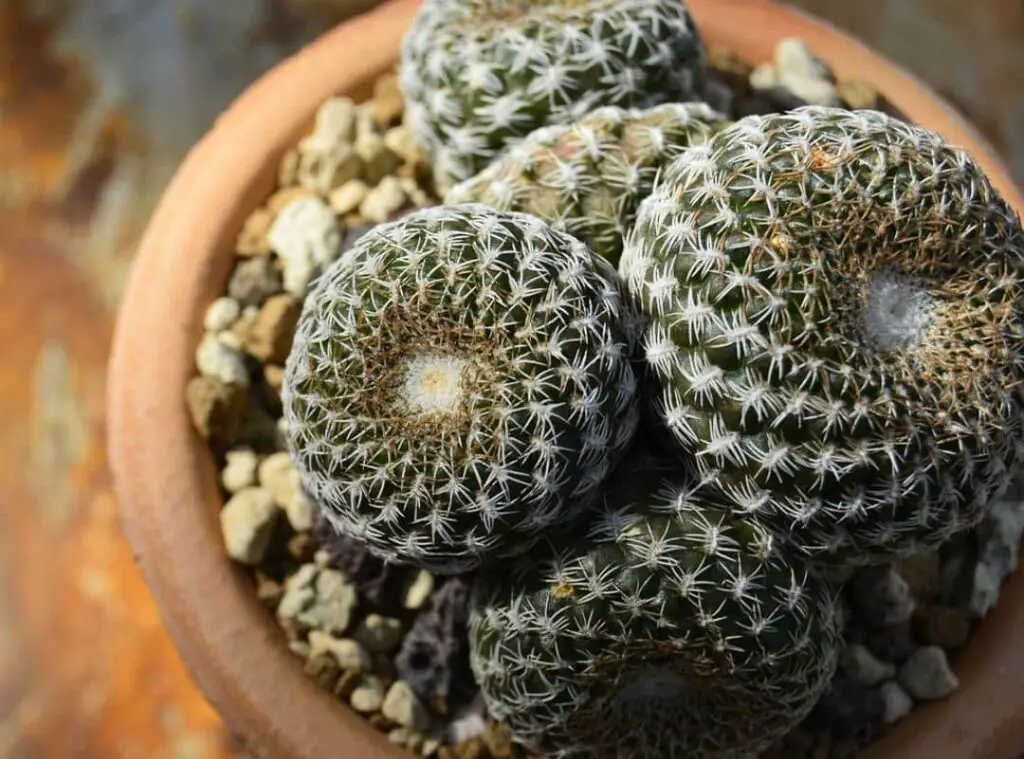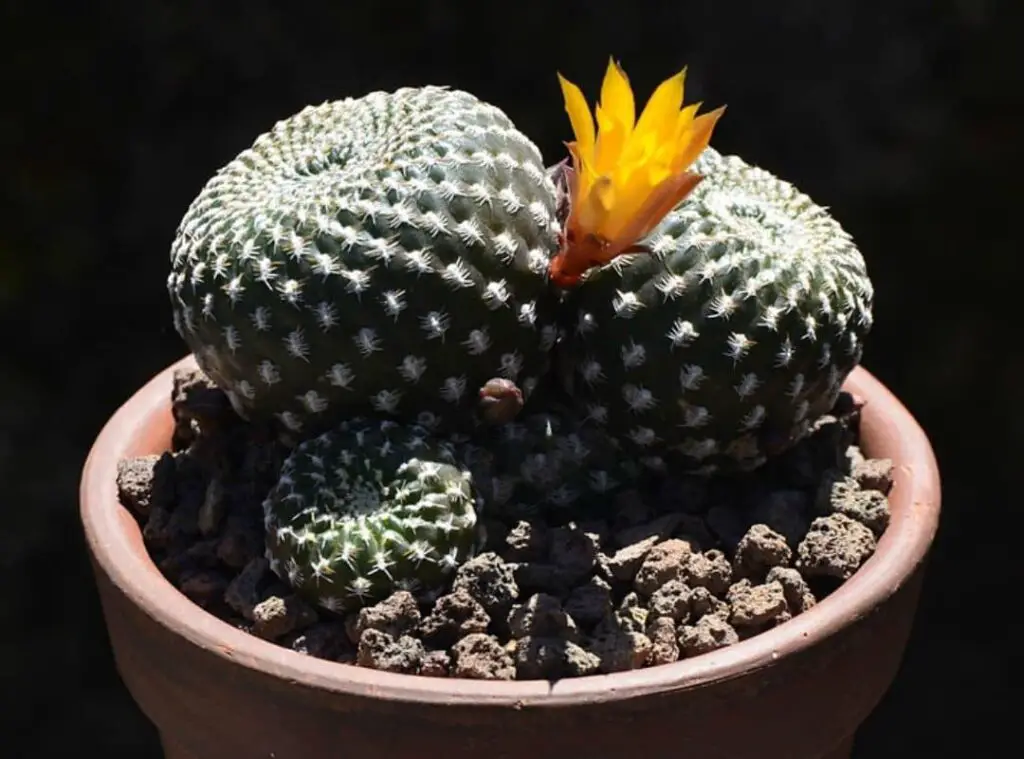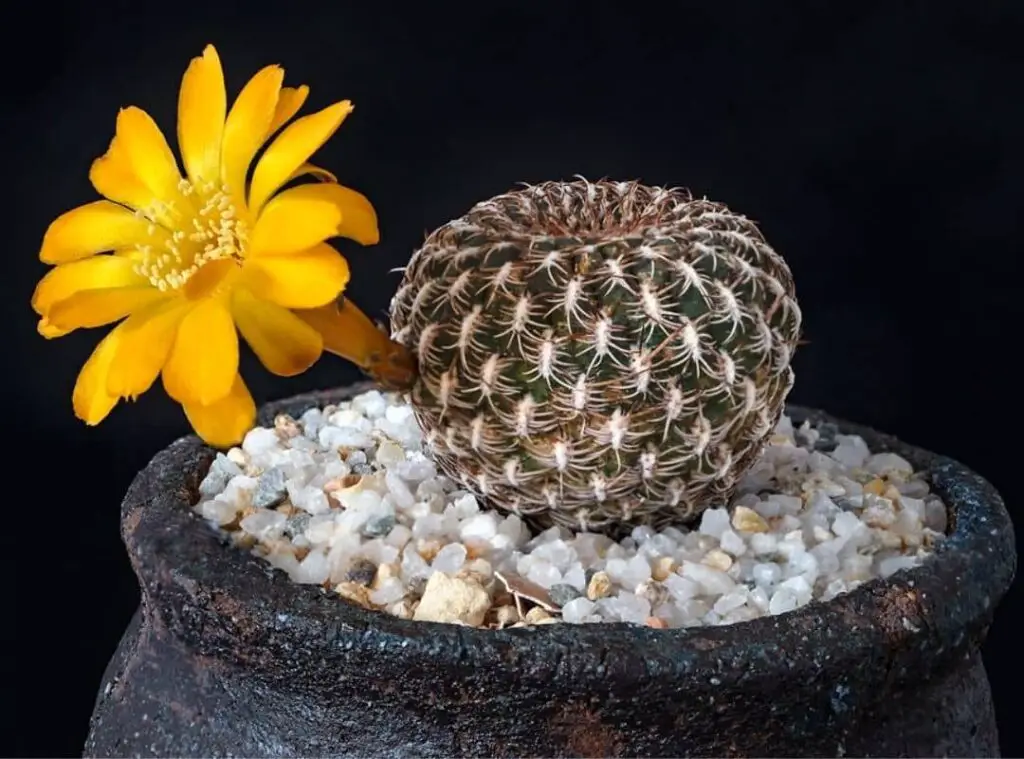Sulcorebutia arenacea plants are endemic to Bolivia. They would thrive well in high deserts which are about 5000 feet above sea level.
If you manage to care for these plants well, they will reward you with some attractive flower blossoms. They are tiny plants which you could spot forming in clumps.
Sulcorebutia arenacea plants require an easy-care treatment from you to grow well. Further they produce plenty of seeds which will germinate around the plants. These plants are commonly known as Rebutia arenacea.

They are drought-tolerant plants and they can conserve water in their bodies. That will help them thrive in the drought periods.
Many people tend to grow them in green houses. Having said that, if you live in suitable conditions, you can grow them outdoors as well. Besides, they will be great additions for container gardening as well.
The highlight of the Sulcorebutia arenacea plants is their small attractive, yellow-colored blooms which usually arise every year.
Furthermore, these plants can produce flowers when these plants are too young as well. Last but not least, they can thrive in a small space as well. So, if you are excited to discover these cuties, I urge you to read this article till the end.
How do I identify Sulcorebutia arenacea?
The body of the plant would be more like a globose in shape. The stem would be 2 – 4 cm in height and 2 -6 cm in diameter. You could spot them in yellow, green, brown or purple in color.
The areoles of the Sulcorebutia arenacea plants are elongated, creamy gray in color.
These plants would grow up to a maximum height of 5-13 cm. Further they would be 10 cm in width once they are fully grown.
Further they may consist of about 30 ribs. In addition to that, Sulcorebutia arenacea may consist of areoles which are broad and cream-colored.
Moreover, they would produce 14-16 rough spines too. They will be whitish yellow in color or even brown in color.
Those spines would be 0.4 – 2 cm in length. There will not be any central spine present in the plants.
They freely produces flowers in yellow to orange in color. Moreover, they would be funnel shaped.
The flowers would be larger compared to the plants. Sulcorebutia arenacea plants’ flowering season would be late winter to spring.
The flowers consist of floral tubes. They would either extend or form in a curved manner upward over the plant.
Besides, they produce fruit. You could identify them as reddish brown in color. The fruits would be 6-8 mm in size.
Growth rate
They are not the types of plants which would grow faster.
One look care guide
| Botanical Name | Sulcorebutia arenacea |
| Common Name | Rebutia arenacea |
| Plant Type | Cactus |
| Mature Size | Maximum height of 5-13 cm / 10 cm in width |
| Sun Exposure | Full sunlight |
| Soil Type | Well draining gritty |
| Soil pH | 6.1 to 6.5 |
| Bloom Time | late winter to spring |
| Flower Color | Yellow orange |
| Hardiness Zones | USDA hardiness zones 9a-11 |
| Native Area | Bolivia |
| Toxicity | Non Toxic |
| Average price | 5 $ |

How do you take care of Sulcorebutia arenacea?
Light Requirement
They would thrive well if you expose them to full sunlight to partial shade. In other words, you need to expose them to six hours of direct sunlight.
Having said that, refrain from exposing them to direct sunlight during heat waves as it would result in scorching them.
Further, if you have grown them as houseplants and wish to expose them to outdoor sunlight, best is to do it in a gradual manner so that they have sufficient time to adapt to those conditions.
Sulcorebutia arenacea need to have sufficient sunlight levels when you grow them indoors as only then can they produce flowers.
Ideally You may choose a bright sunny windowsill or a spot in the patio to place the plants.
Temperature and humidity
In terms of the right temperatures and the humidity, Sulcorebutia arenacea would prefer to have warmer temperatures and low humidity levels.
The optimal temperature which would suit them the best would be above 70 degrees Fahrenheit. They can thrive in cooler temperatures during winter.
In fact, they are tolerant of temperatures which are below freezing point as well. Having said that, if you leave them exposed to wet winters, it will saturate the topsoil and it may even result in the deaths of the plants.
Is it cold hardy?
USDA Hardiness Zone
They would perform well in USDA hardiness zones 9a-11.

Watering Requirement
Sulcorebutia arenacea used to grow in hot and dry conditions and this literally means if you end up over watering them, it will make the plants more attractive towards rot.
Just like with the rest of other succulents and cacti, these plants also have similar requirements when it comes to watering, Hence you should ideally water them moderately and refrain from over watering them.
Further if you are unsure whether you need to water the Sulcorebutia arenacea plants or not, best is to wait for two days and then water them.
That is simply because there will be less repercussions from under watering rather than what the plants may go through over watering.
Furthermore, minimize watering them during winter, particularly if you over winter them outdoors. If you are growing them as indoor plants, best is to water them once every month or once every month and a half.
Soil Requirement Type / pH.
I recommend using a gritty soil mix which has an excellent drainage for the Sulcorebutia arenacea plants. You may either use a cactus soil mix or amend a regular potting mix and then use.
To amend it, you can simply add sand or fine pumice. You need to add them at a ratio of 2:1 into a regular potting mix so that it would enhance the texture and the drainage of the potting medium.
Furthermore, you need to add coarse sand around the taproot so that it would not allow any water pools to build up.
Pot size Potting and Repotting
You should select a pot which has sufficient drainage to grow the Sulcorebutia arenacea. Further when you plant them, you need to dig a shallow hole in the potting mix and place the plants there.
When it comes to reporting, you need to conduct it once every two years only. Sulcorebutia arenacea usually prefer to be root bound and you can do it less often.
Having said that, if your precious plants are under attack by any pests, you need to consider repotting them.
Where to Plant
As aforesaid, Sulcorebutia arenacea can survive indoors as well as outdoors. When you grow them indoors, they can thrive well in the containers.
On the other hand, you can grow them outdoors as they are somewhat cold hardy as explained in the above.
Fertilizer and time of year
Sulcorebutia arenacea are not the type of plants where you need to feed them heavily.
With that being said, you can consider feeding them a little during their active growing season once a month so that it would give them some boost during their active growing season.
You may go ahead with a fertilizer formulated for cacti and succulents for this purpose. Ensure that you apply these fertilizers during spring and summer only. Suspend feeding them during winter.

Flower
Sulcorebutia arenacea develop beautiful flower blossoms during spring. They would arise in clusters at the stem crown and you could spot them in yellow and in orange. Sulcorebutia arenacea flowering season would be late winter to spring.
Dormancy
Toxicity
They are non-toxic plants for both humans and for pets.
Common bugs and illnesses
They are strong contenders when it comes to resisting pests’ attacks and diseases.
Having said that, if you provide them with excess water, it will make the plants more attractive towards the pest’s attacks and for other diseases as well.
For example, your precious Sulcorebutia arenacea plants may suffer from root rot if you over water the plants.
Furthermore, you need to watch out for pests such as scale, mealybugs as chances are that they may attack these plants if they find favorable conditions for them.
benefits
Sulcorebutia arenacea plants would be great picks for container gardening as well as for outdoor gardening. Moreover, you may grow them in green houses too.
How to propagate Sulcorebutia arenacea
Sulcorebutia arenacea plants produce offsets at the plant base and you can simply separate them and plant them so that they can grow on their own.
In addition to that you can propagate them by cutting them as well. Simply you have to obtain the cuttings and allow them to dry and then grow them in a well-draining soil mix.
Besides, you may use the plant seeds to propagate them too. You can sow them in a well-draining soil mix during spring.
Conclusion
To conclude, I hope this article gives you a broader view of how to look after the Sulcorebutia arenacea plants well the illness they may come across and on the modes of propagating them.
Sulcorebutia arenacea plants are such great unique looking plants and anybody would fall in love with these beautiful plants. So, happy gardening with Sulcorebutia arenacea !
Read Next : Crassula Nealeana Care | It Is Not A Everyday Plant! | Echeveria Midway | A Succulent With Amazing Wrinkled Leaves |
